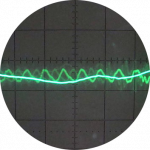[Sticky] Renewables glossary
Renewable heating and renewable energy are very jargon and acronym rich subjects. To help navigate through them, here is a glossary of some of the most frequently used ones on the forum. If you find any others that aren't explained here or have any suggestions, please let us know by posting a response to this thread. We'll incorporate the suggestions as appropriate into this post and delete the responses to keep the thread clean and useable.
AC - Alternating current
An electrical current that keeps changing direction. The UK operates domestic mains electricity at 230V ac at a frequency of 50Hz, but both voltage and frequency can vary by country.
API - Application programming interface
A standardised means of sending and receiving data, often over the Internet.
ASHP - Air source heat pump
An appliance that cools the air outside and dumps that heat into a home, thereby keeping the occupants warm. Strictly, an air source heat pump could be configured to work the opposite way round as well, at which point it would be working as we commonly think of as air conditioning, although this is not always practical for every setup.
BESS - Battery energy storage system
Exactly as it says, a means of storing electricity in one or more batteries for use later. Typically used to store home-generated electricity from domestic solar panels or electricity bought from the grid at cheap times so it can be consumed when the grid unit price is high.
BUS - Boiler upgrade scheme
A Government funded incentive scheme for homeowners wanting to move from fossil fuel heating to renewable energy heating. The BUS took over when the RHI was retired.
CAN (bus) - A communications protocol commonly for talking wit pieces of hardware
See also Modbus. CAN bus or controller area network bus in the context of this forum's areas of discussion is most commonly used for communication with electric vehicles, home storage batteries and domestic inverters. It is a protocol (a language, if you like) normally used over a two-wire cable. See also RS485.
CoP - Coefficient of Performance
See also SCoP. The coefficient of performance is a measure of how efficiently a heat pump or boiler converts fuel energy (electricity, gas, oil) into heat energy. By dividing the output energy in kWh by the input energy in kWh you get a ratio and that particular ratio is called the CoP, and a CoP of 3 is the same as saying the heat pump is 300% efficient, or that 1 kWh in is converted into 3 kWh out. However, a CoP figure is calculated as a point in time measure or, more commonly, as a measure of efficiency over a short period of time. Therefore, a heat pump could vary its CoP quite significantly over a heating season.
DC - Direct current
An electrical current that flows in a single direction
DCC - Data Communications Company
The company who operate the encrypted messages system between smart meters and energy suppliers
DESNZ - Department of Energy Security and Net Zero
The government department, headed by the Secretary of State, which defines energy policy for the UK
DHW - Domestic hot water
The water in a hot water tank, as opposed to the water running through radiators and underfloor heating
DNO - Distribution Network Operator
A company which holds a licence for maintaining the distribution grid for electricity up to 132kV within a given geographical region. There are multiple geographical regions and so multiple DNOs. DNOs are distinct and separate companies to the energy suppliers like EDF, Octopus, OVO and the like.
FT - Flow temperature
The temperature of the water just after it has left the heat pump on its way to the radiators or water tank. See also LWT.
HV - High voltage
The distinction between high and low voltage electrical circuits depends hugely on context. However, typically in a domestic setting, mains electricity (230 volts AC) is seen as high voltage whereas LED lights and so forth may well be run on 12 volts DC which is thought of as low voltage.
IAT - Internal (or indoor, or inside) air temperature
The temperature of the air inside a home
kW - kilowatt
A unit used to express power, most typically electrical power; the more kilowatts, the more powerful something is. Not to be confused with kWh
kWh - kilowatt hour
A unit used to express energy. It combines the power rating (usually in kW) with duration (typically hours) where running something at 1 kW for one hour will use 1 kWh of energy and running it at 2 kW for 3 hours will use 6 kWh energy. Not to be confused with kW (which expresses power, not energy)
LV - Low voltage
The distinction between high and low voltage electrical circuits depends hugely on context. However, typically in a domestic setting, mains electricity (230 volts AC) is seen as high voltage whereas LED lights and so forth may well be run on 12 volts DC which is thought of as low voltage.
LWT - Leaving water temperature
Another acronym meaning the same as flow temperature; the temperature of the water just after it has left the heat pump on its way to the radiators or water tank. See also FT.
MCS - Microgeneration Certification Scheme
What this scheme is or isn't is a matter of active debate. The important point here is that any renewable heating solution must be installed by an MCS-registered installer and in accordance with MCS regulations in order to qualify for the BUS grant.
Modbus - A communications protocol commonly for talking with pieces of hardware
Many pieces of renewables hardware (solar inverters, heat pumps and so on) are designed to be hooked up to a two-wire cable so systems can communicate with the kit. That communication could be carried out over that wire using several different protocols (languages, if you like) and modbus is one of those protocols. Not all kit supports modbus, however, and lack of standards in this area is a common bugbear. See also RS485
NESO - National Energy Systems Operator
This is an organisation which runs the electricity, gas and heat networks for Great Britain
NGET - National Grid Electricity Transmission
This is an organisation which is licensed to maintain the electricity transmission grid for England and Wales. This part of the national grid operates at high voltages - 275kV and 400kV
OAT - Outside air temperature
The temperature of the air outside any buildings
OFGEM - Office for Gas and Electricity Markets
OFGEM is the regulator for the energy industry. It issues licences for energy suppliers and operators.
PV - Photovoltaic
Typically used in conjunction with the term "solar". Solar PV - generating electricity from sunlight - is generally mentioned in order to distinguish it from solar thermal which uses solar energy to heat water.
RHI - Renewable heating incentive
A Government funded incentive scheme for homeowners wanting to move from fossil fuel heating to renewable energy heating. Superceded by the BUS
RS485
RS485 is an electrical communications standard which, without overcomplicating, lets a two-wire cable be used to send and receive signals. Modbus and CAN bus are two communications protocols that are commonly used transmitted over RS485 cables. In the well known telephone analogy of two cans and a piece of string, RS485 represents the string and cans (the hardware bit) and modbus or CAN bus represent the chosen language of the two people holding the cans; communication won't work if one speaks German and the other speaks Japanese.
RWT (or sometimes RT) - Return water temperature
The temperature of the water just as it returns to the heat pump on its way back from the radiators or water tank. N.B. RT can occasionally also be used to denote room temperature which is synonymous with IAT (internal air temperature)
SCoP - Seasonal Coefficient of Performance
See also CoP. Where the CoP is a measure of heating efficiency at a point in time, the SCoP is a measure of efficiency over a whole heating season. It is calculated by dividing the heat energy in kWh delivered over a whole year by the fuel energy (electricity, gas, oil) consumed in order to deliver that heat. This averages out the performance across good and bad periods and gives a far more accurate understanding of a heat pump or boiler's true efficiency.
SMETS2 - A standard for smart meters
A smart meter is a means not only of measuring consumption of water, gas or electricity but also of communicating that consumption regularly back to the utility provider. There's a lot of infrastructure involved in making that happen and SMETS2 is a list of standards the meter has to abide by to be allowed access to that infrastructure.
TOU - Time of use
Some electricity tariffs vary the price of a unit of electricity according to when that electricity is consumed. These are termed Time Of Use tariffs. The term can cover relatively predictable tariffs designed for electric car charging (one normal price for most time periods during a day and one lower price for times set aside for car charging) as well as highly volatile tariffs - such as Octopus Agile - with different prices per half-hour period with those prices being decided one day ahead in line with wholesale energy prices.
UFH - Underfloor heating
Snakes of water pipes laid under a room's flooring to make the floor one big radiator. The large surface area means it doesn't have to get very warm to raise the room temperature a significant amount and so it is an excellent pairing to a heat pump.
ΔT (or DeltaT) - The difference between two temperatures
The difference in temperature between two points in a heating system - most commonly the water leaving a heat pump and returning - combined with the flow speed to determine the volume of water, is used to work out how much energy has been released as heat. This information is important in any tweaking of a heat pump.
105 m2 bungalow in South East England
Mitsubishi Ecodan 8.5 kW air source heat pump
18 x 360W solar panels
1 x 6 kW GroWatt battery and SPH5000 inverter
1 x Myenergi Zappi
1 x VW ID3
Raised beds for home-grown veg and chickens for eggs
"Semper in excretia; sumus solum profundum variat"
- 26 Forums
- 2,342 Topics
- 53 K Posts
- 185 Online
- 6,000 Members
Join Us!
Worth Watching
Latest Posts
-

RE: Are We Sleepwalking Into Another Race to the Bottom?
…otherwise known as “hive got news for you”. And don’...
By Majordennisbloodnok , 3 hours ago
-
RE: Configuring third party dongle for Ecodan local control
Logically, I'll fall into that category so the natural ...
By Sheriff Fatman , 3 hours ago
-

RE: Controlling Daikin Altherma via P1P2 and Home Assistant
I haven’t got a Daikin but I have been having some fun ...
By Majordennisbloodnok , 4 hours ago
-

RE: Setback savings - fact or fiction?
@robs — thanks again for your detailed comments. Some r...
By cathodeRay , 6 hours ago
-
RE: Free Ecoheat Heat Pump Install
I don't mind thread drift, it's how conversation natura...
By Deltona , 8 hours ago
-

RE: A Smarter Smart Controller from Homely?
@papahuhu I hope you get a swift resolution. Regards, T...
By Toodles , 10 hours ago
-

RE: Poll for Time of Use, tariffs, technology
That’s fine by me too Major, I feel it is a sad reflect...
By Toodles , 11 hours ago
-

Bingo. Sometimes a judiciously placed size 10 bovver bo...
By Majordennisbloodnok , 12 hours ago
-
RE: Mitsubishi Ecodan 11.2kW heat pump with low COP
@ciocoiu-alexandru I can't provide the same level of di...
By Sheriff Fatman , 12 hours ago
-
RE: Octopus Cosy Heat Pump Owners & Discussion Thread
Recently had my follow up with octopus for the vibratio...
By swwils , 13 hours ago
-

The three technical issues I'm considering are: BMS...
By Transparent , 14 hours ago
-
RE: LiFePO4 lithium battery fires and explosions
@transparent Your post may fit better in th...
By Batpred , 14 hours ago
-

RE: British Gas vs Octopus Energy vs Heat Geek vs EDF vs Aira vs OVO vs EON.Next vs Boxt
@jamespawhite, if you could be bothered, you could also...
By Mars , 16 hours ago
-
RE: Commencing on an ASHP Installation Process
I've got a bit of time to draft something today, so the...
By Sheriff Fatman , 1 day ago
-
RE: Help with heat pump sizing
@amin I dont think materially relative to t...
By JamesPa , 1 day ago
-

@majordennisbloodnok I have decided to take the plunge....
By TechnoGeek , 1 day ago
-
RE: Different dT on each radiator?
I cant sorry. Its based on some calculations I did fro...
By JamesPa , 2 days ago
-
RE: Help me keep the faith with my air source heat pump installation
@simonf thats interesting as I’ve noticed my flow and r...
By AdamK , 3 days ago




